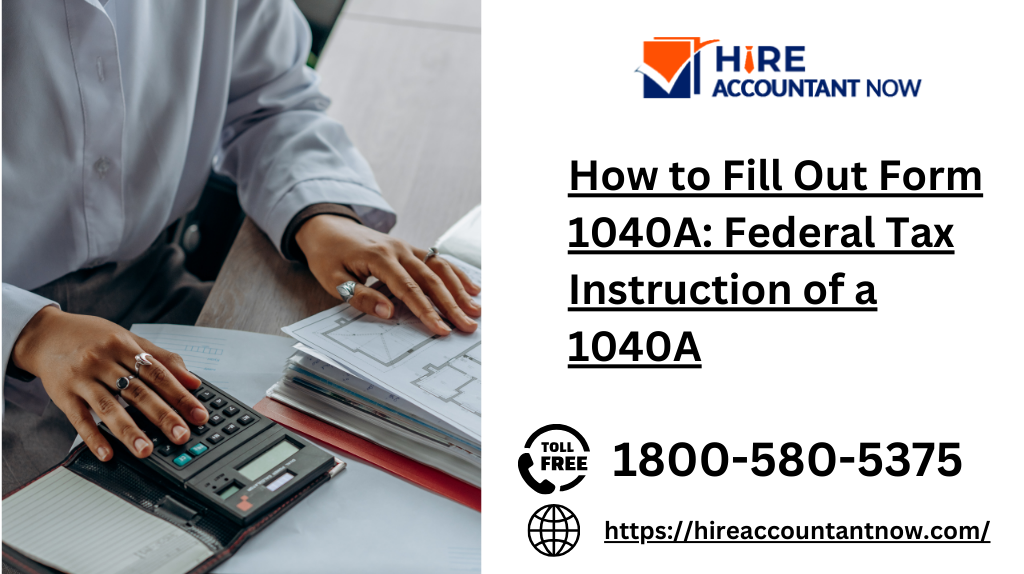Selecting the appropriate tax return form can often be a bewildering decision. Whether you continue to submit paper returns annually or have transitioned to electronic filing, the dilemma typically involves selecting between IRS Form 1040, Form 1040A, or Form 1040EZ to report your income to the IRS. This choice is contingent on various factors, primarily revolving around the nature and magnitude of your income and your filing status.
Suppose your income is straightforward and falls within certain limits. In that case, Form 1040EZ might be the most straightforward choice, offering a streamlined process. Form 1040A provides a middle ground, accommodating a broader range of income sources and deductions. On the other hand, Form 1040 is the most comprehensive option, suitable for those with complex financial situations.
Understanding these distinctions can help you navigate the tax filing process more clearly and efficiently.
The Tax Return Series
The IRS 1040 Tax Return Series contains a type of forms, yet for the maturity of taxpayers, the 1040, 1040EZ, and 1040A formats are the preceding options. Among these, Form 1040A, usually directed to as the “short form,” attacks a balance between the plainness of the IRS 1040EZ and the more tough IRS 1040, also known as the “long form.” The 1040EZ is the most straightforward, while the 1040 entails a more detailed filing process. The income verge that distinguishes these forms is fixed at $100,000. If your payment falls below this entryway, you can determine between the 1040EZ and the 1040A. If your income outmatches $100,000, the long-form 1040 is your preferred prospect.
When deciding between the 1040EZ and the 1040A, your choice depends in part on factors like dependents and deductions, though other considerations come into play. To use the 1040EZ, you cannot claim any dependents and must opt for the standard deduction, forgoing itemized deductions. Conversely, the 1040A allows you to claim dependents while still requiring the standard deduction.
Read more: how to fill out Form 1040
Introducing the New Form 1040A
Triggering from the 2018 tax year (applicable to returns filed in 2019), the IRS facilitates the tax filing process for most taxpayers. They are familiarizing a redesigned Form 1040, which combines the functionalities of the current 1040, 1040EZ, and 1040A forms into a single, suitable composition. This innovative guideline simplifies the tax return procedure by converging the instructions for all three documents into one extensive set. Consequently, the everyday instructions associated with the 1040A may experience formatting changes to align with the new, more user-friendly design.
Standard Deductions vs. Itemized Deductions
Conclusions symbolize suitable payments that can be involved to diminish your taxable income on your annual tax return. This lessening in taxable gain after that decreases the portion of tax you are demanded to pay. Taxpayers are suggested with a selection: they can either expropriate the standard deduction, which counters trusting on their filing status, or they can opt for itemizing deductions, which are tailored to their distinctive financial occasions.
Pro Tip: As you can decide on one type of deduction, selecting the option that misjudges your overall tax disservice is advisable.
Determining Your Filing Status
Once you’ve filled in your essential taxpayer details, such as your name, address, and Social Security number, your 1040A tax return guides you through Lines 1 to 5, where you must select your filing status. The instructions accompanying the 1040A form provide detailed explanations of the qualifying criteria for each of the five available filing statuses: single, head of household, married filing separately, married filing jointly, and qualifying widow(er). It’s possible that you meet the criteria for more than one filing status, but the IRS strongly recommends choosing the one that yields the lowest tax liability.
Helpful Tip: To make an informed decision, visit IRS.gov/forms and search for the 1040A instructions. You can review the guidelines for each filing status and select the one that best aligns with your circumstances.
Instructions for IRS Form 1040A
When you complete IRS Form 1040A, you’ll navigate through a total of 51 form fields, starting with your chosen filing status. The 1040A instructions, thoughtfully provided by the IRS, offer a comprehensive guide through each area. These instructions come packed with definitions, illustrative examples, and exceptions to aid you in accurately populating the form. Additionally, for those who prefer manual calculations, the IRS has thoughtfully included several worksheets to facilitate the process, ensuring that you have all the necessary tools at your disposal to complete the form with precision.
Form 1040 Worksheets Made Easy
If the idea of tackling worksheets triggers memories of dreaded math tests (especially if math wasn’t your strong suit in school), take a calming breath. The 1040A instructions are designed to provide in-depth guidance, complete with step-by-step flow charts, making it possible for you to navigate these worksheets without needing to possess the skills of a math whiz or tax expert. For instance, some worksheets simplify the process with straightforward yes-or-no questions, efficiently directing you to the relevant sections pertaining to your situation.
1040A Eligible Income Categories
The IRS types income conceptions into two preceding categories: “earned income” and “unearned income,” each encompassing various subcategories. For illustration, earned payment comprises wages and pay, while unearned income includes interest and rewards. To file a 1040A tax return, your income must fall into specific allowable types, as outlined in the 1040A instructions. These eligible income types include:
- Wages, salaries, and tips
- Interest and ordinary dividends
- Capital gain distributions
- Taxable scholarship and fellowship grants
- Pensions, annuities, and IRAs
- Unemployment compensation
- Alaska Permanent Fund dividends
- Taxable Social Security and railroad retirement benefits
These categories encompass the income sources that qualify for the simplified 1040A tax return, providing clarity for taxpayers when reporting their earnings.
Within the 1040A worksheets, you’ll discover tools to assist you in calculating various aspects, such as determining the taxable portion of specific income sources (like pensions and annuities), assessing student loan deductions, distinguishing between deductible and nondeductible contributions, and calculating the earned income credit (EIC). However, if you are motionless and encounter yourself grappling with the worksheets, recall that offering is readily unrestricted by running out to your tax accountant or tax preparer. They are just a phone call missing, eager to lend a conducive hand.




